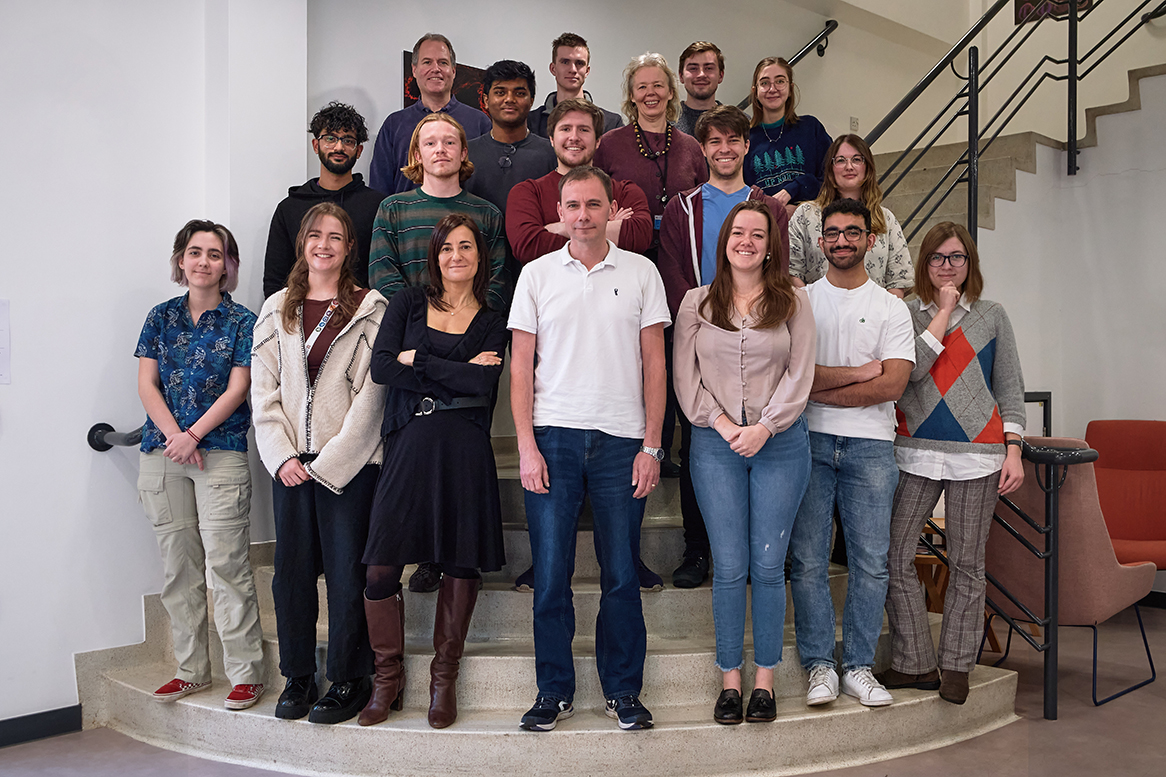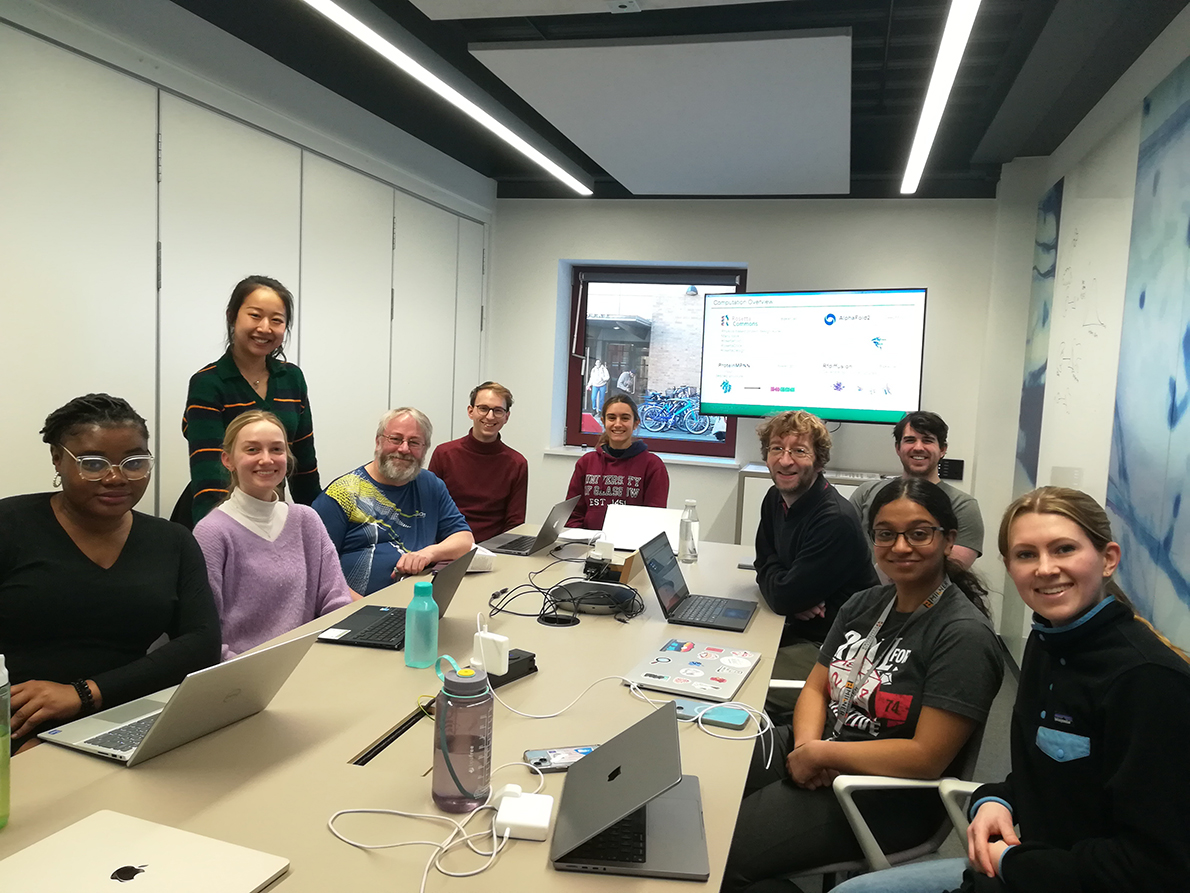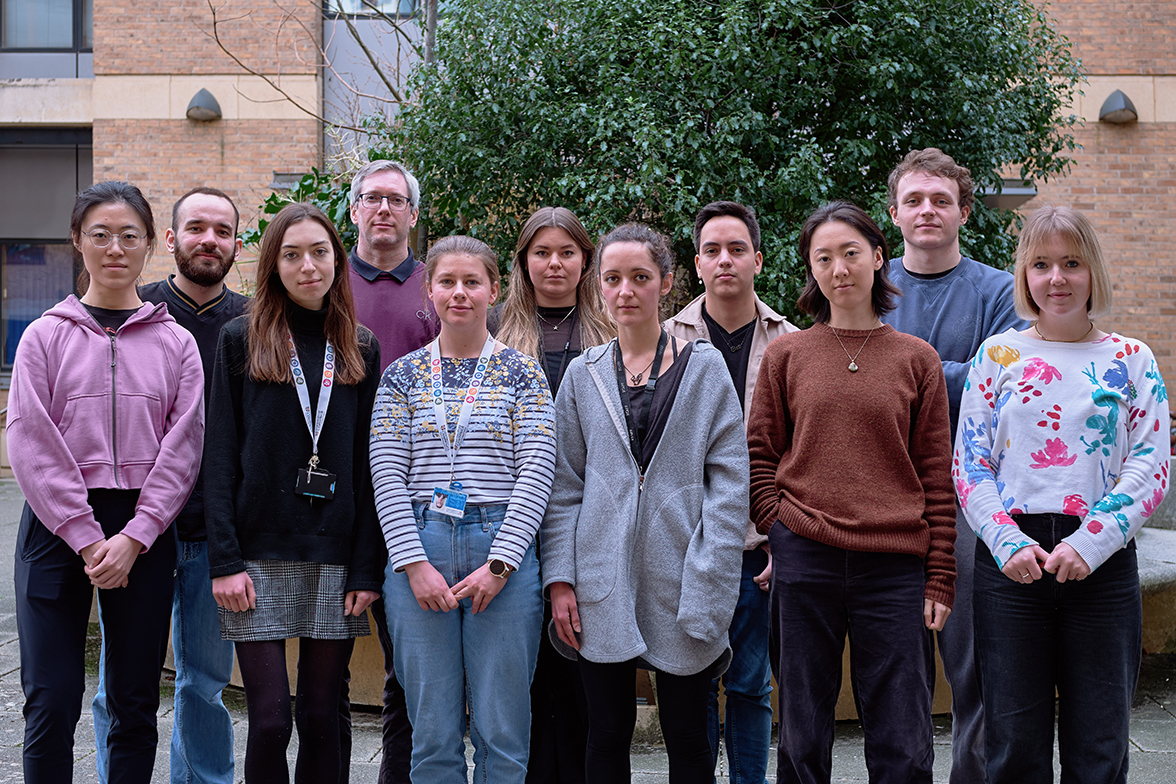Cell Signalling (Ladds) Group
Unveiling GPCR Signalling for Intelligent Drug Design
G protein-coupled receptors (GPCRs) wield immense influence, comprising over 800 cell surface receptors and serving as prime drug targets (30% of current medications target them). These receptors initiate cellular signalling upon agonist binding, activating a trio of combined G proteins (Gαβγ). Mammalian cells express 15 different Gα subunits, grouped into four main families, with different GPCRs activating a diverse range of Gα subunits, based on what agonist binds to the receptor - allowing a range of messengers to activate various Gα subunits (termed biased agonism) and produce different effects.
Biased agonists, hailed for their potential to trigger desired signals while dampening unwanted effects, face controversy. For example, previous attempts to exploit this, such as synthetic-biased agonists aimed at the μ-opioid receptor, fell short. This highlights our incomplete understanding of which GPCR pathways yield intended effects versus side effects – perhaps best exemplified by a focus on Gα vs β-arrestin signalling, with little consideration for other subunit biases and interactions.
Crafting safer GPCR-targeted drugs
The groundbreaking work in the Cell Signalling group, led by Professor Graham Ladds, integrates molecular pharmacology, medicinal chemistry, and dynamic pathway modelling. Their goal? To create predictive models unravelling the molecular intricacies of GPCR signalling bias, to determine the root cause of signalling bias. This is not just academic; but rather a roadmap for crafting safer GPCR-targeted drugs.
Their initial focus includes Class A purinergic receptors linked to pain, chronic obstructive pulmonary disease, cancer, and heart disease; the Class B1 family, associated with diabetes, obesity, and cardiovascular pathologies; and olfactory and taste receptors.
Computational modelling and machine learning
Computational modelling and machine learning further aid in scrutinizing new drug candidates. Crucially, the Cell Signalling group's collaborations with pharmaceutical companies like AstraZeneca and Takeda Pharmaceuticals form the bedrock of their success.
This convergence of expertise, innovation, and collaboration charts a path toward safer, more effective drugs targeting GPCRs. By decoding the complexities of cellular signalling, this research paves the way for precision drug design, promising a future where GPCR-targeted medications offer heightened efficacy with minimised side effects.
Howarth Group
Innovating Protein Technologies for Therapeutics and Vaccine Design
The Howarth group develops novel molecular superglues and then applies these technologies to address major challenges for infectious disease and cancer. The group re-engineered a component from the surface of the bacterium Streptococcus pyogenes, to create a specific and unbreakable protein pair called SpyTag and SpyCatcher. This pair is one of the strongest protein interactions ever measured and has been applied by hundreds of labs around the world for diverse areas of basic research and biotechnology. SpyTag has entered clinical trials towards generating the first effective vaccine for cytomegalovirus (CMV), a major cause of deafness and blindness in newborn children. SpyTag technology is also being employed in a clinical trial to generate an improved vaccine against malaria, one of the biggest challenges in global health. SpyTag provides a unique route to explore combinations of antibodies, to identify new pairings that give the best control of cell signalling, for more potent targeting of cancer. The group employs their insight into protein structure with computational methods and screening of libraries of billions of variants, to hone in on the most effective new superglues.
Most recently the group developed a new superglue system, called NeissLock. NeissLock was engineered from another bacterium, Neisseria meningitidis, and reacts irreversibly with unmodified neighbouring proteins. The Howarth lab is progressing NeissLock technology to generate therapeutics through hitchhiking on red blood cells, which may be particularly effective against the uncontrolled blockade of blood vessels in heart attacks and strokes. The group also aims to enhance CAR-T cell therapy of cancer, which has been revolutionary against leukaemia/lymphoma but has had little success against solid tumours.
Overall, the work of the Howarth group is aimed at creating widely applicable technologies for building molecular assemblies, both to share these with other groups and to push the technology’s potential to tackle major medical challenges.
Miller Group
Challenges in GABA-A Receptor Targets
Benzodiazepines, such as Valium, and Z-drugs, such as Ambien, are important for the treatment of neurological conditions as varied as anxiety, epilepsy, and insomnia. These conditions affect millions of people worldwide, with these treatments providing much-needed relief. However, currently used drugs have many unwanted side effects, including: addiction, sedation, and amnesia.
These drugs target the gamma-aminobutyric acid-A (GABA-A) receptor, which is found in the brain, to produce these beneficial effects. However, there are many different forms of GABA-A receptors and those drugs in clinical use often target multiple forms, which leads to harmful side effects. The lack of selectivity severely limits the treatment potential of GABA-A receptor-targeting drugs to treat neurological conditions and beyond. Attempts have been made to make improved small molecule compounds with improved selectivity for GABA-A receptors but have been met with limited success.
Structural Biology, new tools and new techniques
The Miller Lab is exploring alternative approaches to advance pharmacology against the GABA-A receptor. This comes in three different flavours: First, their lab uses structural biology approaches to see how GABA-A receptors function at the molecular level, allowing them to observe small molecule compounds in action, and so inform on accurate rational drug design. Second, they are developing new antibodies that can act like small molecule compounds but offer superior selectivity. Third, they are studying specialized shuttles that can transport antibody drug cargo into the brain.
Overall, work in the Miller Lab is expanding knowledge of GABA-A receptors in health and disease, empowering basic research with new pharmacological tools, and offering the translational potential for the development of future therapeutics for a wide array of neurological disorders.
Lindon Group
Exploring protein ubiquitination for targeted therapies
The Lindon group studies ubiquitin pathways, with a particular interest in those regulating the cell cycle in humans. Their research seeks to understand more about the cell cycle, and how cell division and cell fate decisions are shaped by ubiquitin-mediated signalling. Beyond investigating the underlying biology of the human cell lifecycle, the group is also actively researching and developing tools to manipulate intracellular protein stability, an exciting new frontier in therapeutic pharmacology.
Much of the group’s focus is on the major cell cycle regulator Aurora A kinase (AURKA), which is a key substrate for ubiquitination by the anaphase-promoting complex (APC/C) in mitotic cells. However AURKA is frequently overexpressed in tumours, where its activities in interphase cells contribute to cancer progression (for example by promoting oncogenic transcription and suppressing mitochondrial output). Some of these interphase functions are independent of kinase activity, and while specific and high affinity kinase inhibitors of AURKA exist, none has yet succeeded in the clinic, depriving clinicians of a potentially useful targeted cancer treatment.
Developing new tools for precise cancer treatments
The Lindon group is actively working to address this deficit: a recent project has characterized the behaviour of small molecule Proteolysis Targeting Chimaeras (PROTACs), derived from the most clinically advanced AURKA inhibitor, alisertib, that are able to clear both endogenous and exogenous AURKA from cells and to downregulate its interphase functions. These tools work by inducing proximity of their target protein to different ubiquitination complexes, triggering ubiquitin-mediated destruction of the target at the proteasome, an approach referred to as ‘Targeted Protein Degradation’ (TPD).
A further project, in collaboration with the Itzhaki Lab, seeks to design novel TPD tools that harness the APC/C ubiquitin ligase by grafting APC/C-binding peptides into stable protein scaffolds to confer degrader activity. By exploiting the ubiquitination activity of APC/C, the group can employ protein degradation pathways to remove disease-causing proteins in a cell cycle-dependent manner.
Overall, the group is focused on improving the available toolkit for targeted protein degradation via the manipulation of cell cycle control systems. Eventually, these toolkits may be applied to clinical cancer treatments, or to targeting of other disease proteins, offering finer control of cellular protein levels.
Websites:
Cell Signaling Group: www.phar.cam.ac.uk/research/Ladds
Howarth Group: www.howarthgroup.org
Miller Group: www.phar.cam.ac.uk/research/miller
Lindon Group: www.phar.cam.ac.uk/research/lindon
Social media accounts:
Cell Signaling Group: https://twitter.com/GpcrL
Howarth Group: https://twitter.com/HowarthSci
Miller Group: https://twitter.com/PMillerLab



